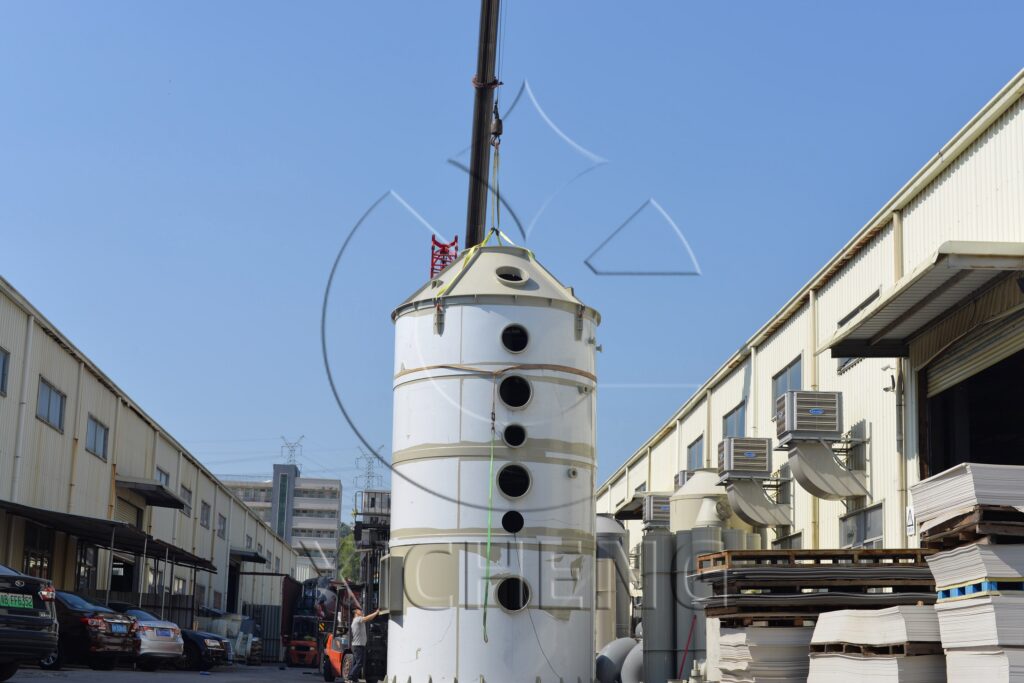With the development of the industrial economy, various manufacturing companies have sprung up, but many problems that follow have also attracted people’s attention, and environmental problems are one of them. Discharging a large amount of industrial waste gas into the atmosphere will inevitably reduce the quality of the atmospheric environment and seriously endanger people’s health. Common waste gas treatment equipment includes wet scrubbers, electrostatic precipitators, and venturi scrubbers.
1. Use waste gas treatment equipment to collect and remove the toxic and harmful gases produced in the production process of the factory to minimize the concentration of waste gas. It is an environmental protection device for protecting the environment and purifying the air and protecting our environment from pollution.
2. Various industrial enterprises have installed waste gas treatment equipment, which not only improves the surrounding environmental quality, but also reduces physical damage to the workers in the factory and surrounding residents, and reduces the incidence of disease. The national environmental protection department pays more and more attention to the problem of waste gas treatment in factories, and there are prescribed index requirements. Therefore, enterprises must be environmentally conscious and consciously install waste gas treatment equipment to reduce pollution to the atmospheric environment, which is also beneficial to people’s health.
Purpose of waste gas treatment equipment: The harm of organic waste gas to the human body is manifold, and the toxicity of organic waste gas in different industries is also different. Among them, the 10 common organic waste gases in industrial waste gas are harmful to the human body. The main benzene organic matter damages the human central nervous system and causes nervous system disorders. If the concentration of benzene vapor is too high (when the content in the air reaches 2%), it can cause fatalities. Of acute poisoning. Polycyclic aromatic hydrocarbons have strong carcinogenicity. Benzoic acid is an organic matter that deforms or coagulates cell proteins, causing systemic poisoning. The occurrence of nitrile organic poisoning can cause breathing difficulties, severe suffocation, and loss of consciousness. Organic nitrobenzene affects the nervous system, blood phase, liver, and spleen organs, and the absorption of a large area of the skin leads to death. Aromatic amines are carcinogenic, and diphenylamine, diphenylamine, etc. enter the human body to cause hypoxia.

Exhaust gas treatment, VOCs exhaust gas treatment
Organic nitrogen compounds are carcinogenic. Organophosphorus compounds can reduce the activity of cholinesterase in the blood and cause dysfunction in the nervous system. Among organosulfur compounds, low concentrations of mercaptans may cause malfunctions, and may die at high concentrations. Among the oxygen-containing organic compounds, acrolein, which is likely to die by inhaling high concentrations of ethylene oxide, has a strong irritation to the mucous membranes, and alcohol can cause headaches, vomiting, and diarrhea.
The working principle of the waste gas treatment equipment
The working principle of the most commonly used industrial wet scrubber is countercurrent spraying: acid or alkaline acid mist exhaust gas is introduced into the purification tower through the air duct, and the exhaust gas is fed from the bottom of the tower through the packing layer. continuous through the voids of the packing layer. On the surface of the packing, the gas-liquid two phases fully contact, absorb and neutralize the reaction, and adsorb the acidic or basic pollutants contained in the exhaust gas.
After the acid mist exhaust gas is purified, the clean gas is dehydrated and demisted by the defogging plate and then discharged into the atmosphere by the fan.
Insoluble viscose particles and dust are poured into the collection tank, suspended particles are discharged from the overflow outlet, and the collected sediment is discharged from the sewage outlet. The absorption liquid is pressurized by the water pump at the bottom of the tower and sprayed downward from the top of the tower, and finally refluxed to the bottom of the tower for recycling.